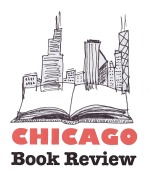 Living Black:
Living Black:
Social Life in an African American Neighborhood
by Mark S. Fleisher
Mark Fleisher, a balding, middle-aged, white Jewish man, spent six years conducting research in “Little Chicago,” an African-American neighborhood on the north end of Champaign, Illinois, not far from the campus of the University of Illinois. An ethnographer by trade, his assignment was to be a local evaluator for a project designed to study gangs and violence as well as intervention and prevention. Fleisher was tasked with interviewing hundreds of adolescent gang members in the North End.
Fleisher spent six years hanging out in the North End, usually the lone white person in the neighborhood. During those six years, he came to know many of the area’s residents, several of whom feature prominently in his reportage of the area and its people, Living Black.
Published by the University of Wisconsin Press within days of the release in Chicago of the Laquan McDonald video, the timing for this book and its topic couldn’t be more relevant.
Living Black takes readers inside a neighborhood most of us likely would never willingly venture into, a neighborhood marked by gangs and violence and poverty and unemployment and drugs. It’s the kind of neighborhood that many people would avoid at all costs, the kind of neighborhood that, if they had to drive through for whatever reason, they would lock the doors, roll up the windows, and floor it through stop signs and red lights. The kind of neighborhood most of us would assume to be dangerous.
That was not, however, the neighborhood that Fleisher found.
Rather, he writes, “the North End was a quiet, low-income residential neighborhood … No homeless folks panhandled by day and slept by night on sidewalks or under bushes. No bag ladies pushed swiped grocery carts packed with heaps of plastic bags. Street corners didn’t harbor drug sellers, and local gang youth didn’t hold court there or in parks.”
What Fleisher found was a community of friends and family with deep connections and a rich social life. What he found were children playing in parks, mothers gossiping with friends, and families holding birthday parties for their children. He found a community where people didn’t chastise, scold, belittle, or judge their peers.
Did he find this community among convicts and felons? Yes. Among unwed teenage mothers whose baby daddies were nowhere to be found? Yes. Among young gang members who sold weed? Yes. But he also found this community among mothers and grandmothers and cousins who stuck together, generations bound by blood and history.
In many ways, Living Black is a book about dichotomies. Fleisher writes, for instance, that “the North End had two faces, one soft and welcoming, the other hardened, portending the area as a dangerous place. The North End I saw in the 1990s was a peaceful, sleepy enclave of black and white neighbors. The North End I heard about was an angry, gang-ridden, segregated community.”
One community, the latter, based on hearsay and assumptions; another community based on experience and reality. Fleisher took the time to get to know the residents of the North End, to move beyond assumptions, to listen to them, and to withhold judgment.
Coming on the heels of a year of protests and violence in Chicago, Baltimore, Ferguson, and so many other cities and neighborhoods across the country, Living Black opens a window on a world that so many of us make assumptions about, succumbing to stereotyping without actually having any real experiences or relationships on which to base those assumptions and stereotypes.
Where so many of us assume poor, African-American neighborhoods to be ghettos rife with cold, hard violence, Fleisher reveals a community full of residents who care about and take care of each other. Where so many people assume the residents of these neighborhoods to be drug-dealing laze-abouts who cash out on welfare, Fleisher reveals resilient, self-sufficient members of a community doing whatever it takes to earn a living, put food on the table, and keep a roof over their heads.
And he does so with little editorializing or commentary. Although it’s not perfect, at times redundant and occasionally too academic, Living Black is thoughtfully observed. It is written with compassion, more objective than not, although not completely impartial: Fleisher himself admits to sticking his nose where it didn’t necessarily belong, having become close with many of his interview subjects. Weighing in on the love lives of his friends/subjects and trying to get jobs for them might be outside the purview of an ethnographer. But it isn’t outside the purview of a human being.
And, above all, Living Black is a human story, not necessarily an account of white vs black or haves vs havenots. This timely study offers a glimpse into a part of society that many of us choose to ignore. At a time when tolerance and understanding seem in short supply, Living Black should be required reading for anyone who could benefit from a look outside their own world into the world of others. Which is most of us.

November 2015, University of Wisconsin Press
Sociology/Current Events
$29.95, paperback, 160 pages
ISBN: 978-0-299-30534-5
—Reviewed by Kelli Christiansen
that the bright daybreak of peace and brotherhood
can never become a reality…
I believe that unarmed truth and unconditional love
will have the final word.”




